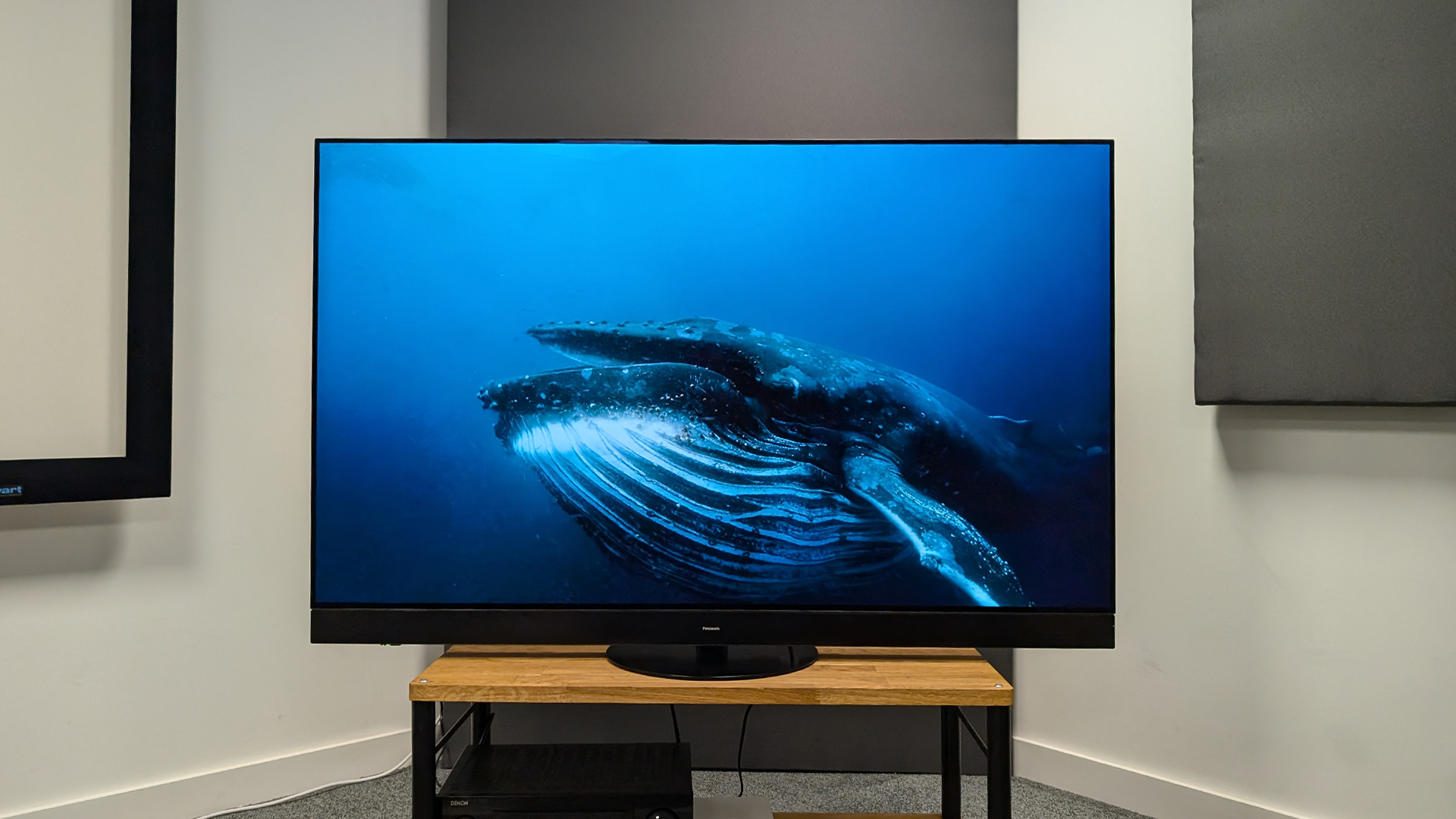What Hi-Fi? Verdict
Panasonic’s second MLA OLED is one of its best, offering punchy peak brightness without sacrificing the brand’s 'as the director intended' authenticity
Pros
- +
Incredibly bright
- +
Good sound (for TV speakers)
- +
Natural and authentic picture
Cons
- -
Some colour volume issues at low brightness
- -
Still beaten for sound by a soundbar
- -
UI is a little clunky to navigate
Why you can trust What Hi-Fi?
The Z95A is Panasonic’s latest flagship OLED TV, and the second from the brand to feature What Hi-Fi? Award-winning, brightness-boosting Micro Lens Array (MLA) screen tech. If that’s not enough to pique your interest it’s also one of the first premium sets from the Japanese home cinema giant to make it to the US – which means it may be some American home cinema fans’ first-ever encounter with the brand.
Does it do enough to make it big in one of the world’s most competitive markets where Sony, Samsung, LG and more are already established? Based on our testing the answer is a definitive yes – especially if you value 'as the director intended' authenticity when watching movies. Though you will have to pay a premium for the privilege of owning one.
Price
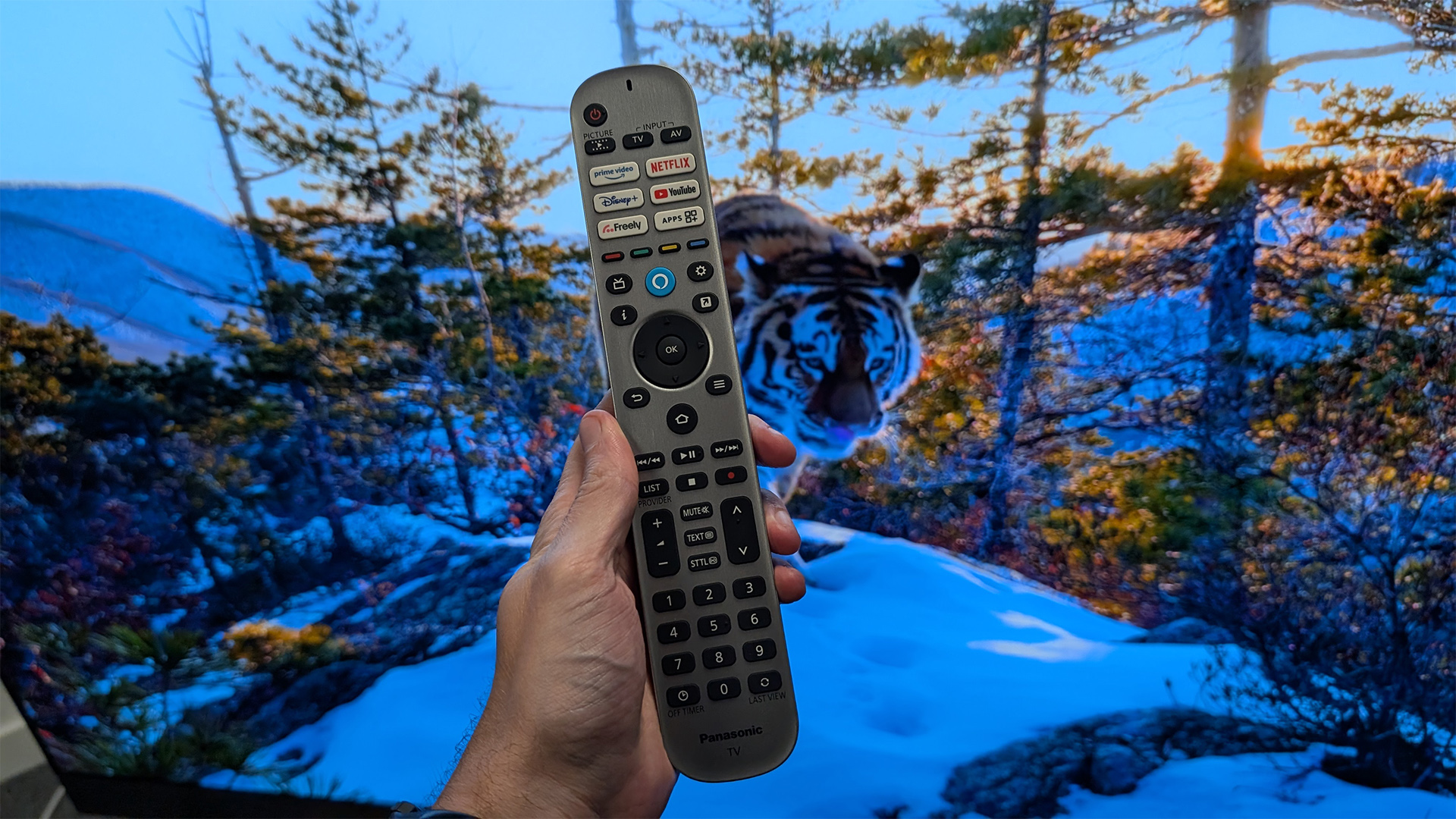
The Panasonic Z95A is only available in two sizes, 55- and 65-inches. If you want any larger you’ll have to look at the 77-inch Panasonic Z93A, which doesn’t have MLA.
At launch, the 65-inch model being tested cost £3899 / $3200, but we’ve since seen it retailing for around £3299 / $2999.
Even with these early discounts, the price means the Z95A is currently selling for significantly more than its closest five-star rivals. The 65-inch LG G4 and Samsung S95D both currently retail for around £2499 / $2499.
On top of that, we’ve started seeing much deeper flash sale prices appear for the LG G4 and Samsung S95D – some of which knock multiple hundreds off their RRP. Meanwhile, the Z95A’s price has stayed fairly static. So if you want a bargain, you may have more luck with another brand’s flagship OLED, at least for the time being.
Panasonic would likely argue the price difference is largely due to the inclusion of the Z95A’s Technics-tuned speaker set-up, which is a far more advanced beast than the sound systems of those flagship rivals.
Design
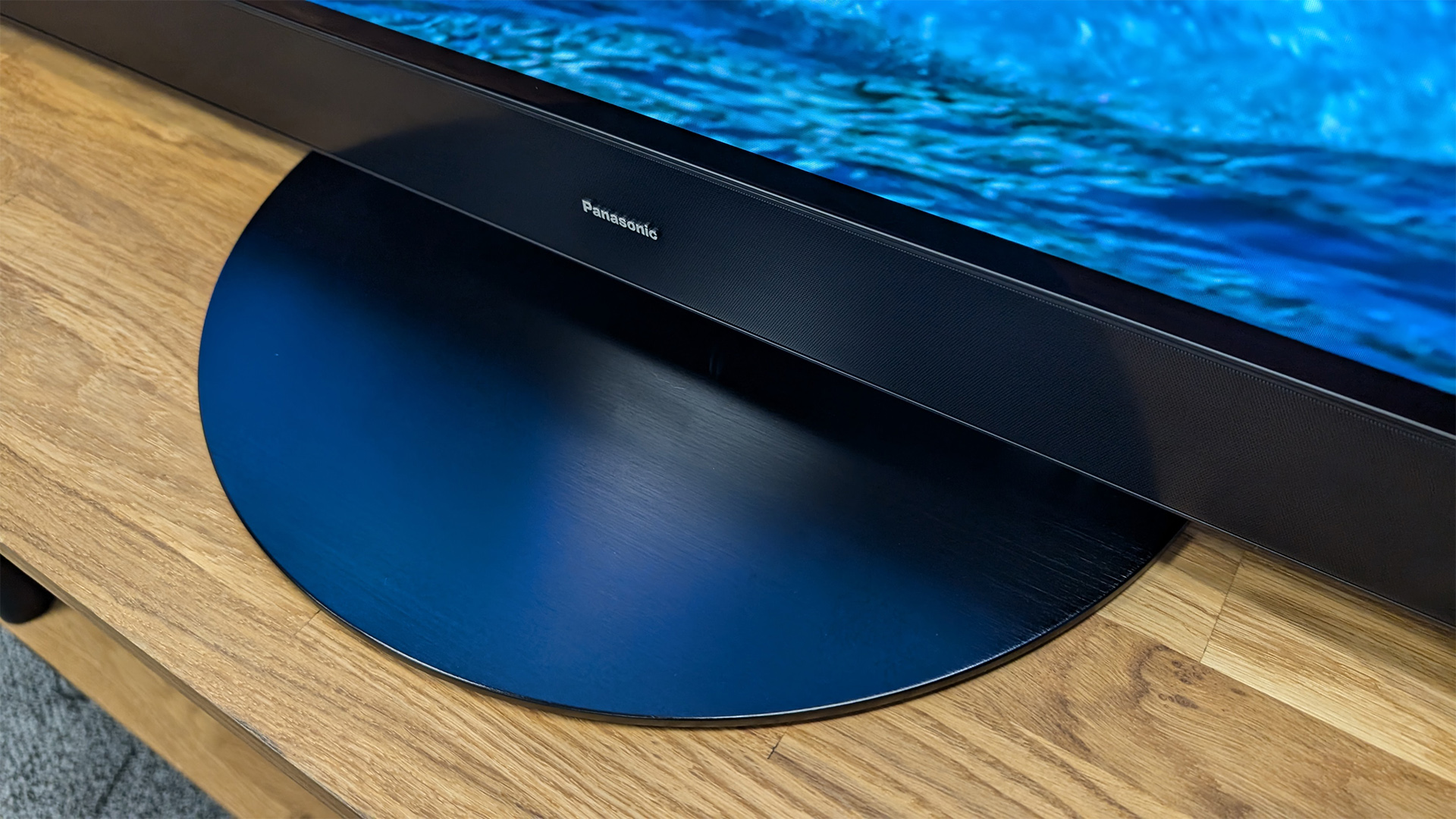
Taking the unit out of the box our reviewers find the Z95A looks very similar to the outgoing MZ2000 – which is no bad thing.
It has a wonderfully understated look that puts function first, featuring a useful circular pedestal stand with a swivel mechanism that makes it quick and easy to adjust the screen’s viewing angle or access its rear inputs.
It is undeniably large, even by 65-inch TV standards, however. The unit is noticeably thicker than many competing OLEDs, thanks to its inbuilt Dolby Atmos sound system, which includes a speaker bar on the unit’s bottom, plus side- and up-firing speakers along its edges.

Screen size 65-inches (also available in 55-inches)
Type MLA OLED
Resolution 4K
HDR formats HLG, HDR10, HDR10+ and Dolby Vision
Operating system Fire OS
HDMI inputs x 4 (2 x 48Gbps HDMI 2.1)
Gaming features 4K/144Hz, 4K/120Hz, VRR, ALLM, Dolby Vision game mode
ARC/eARC eARC
Optical output? Yes
Dimensions (hwd, without stand) 89 x 145 x 6.9 cm
The added thickness is also due to the addition of a more robust new 'multi-layer heat management configuration' (essentially an upgraded heatsink). Panasonic claims this helps the Z95A take full advantage of the demanding, but high-performance MLA screen tech for longer periods without overheating or damage.
Despite the added heft, the unit is well made, with the plastic back and metal stand feeling solid and looking suitably premium. The back offers no flex, and the stand’s swivel mechanism has a reassuringly solid feel, being firm enough to hold its angle when met with an accidental bump, but loose enough to easily adjust as needed. In each instance, it never flexes or feels close to breaking.
The only issue is that the same attention hasn’t been given to the UK version of the Z95A’s remote, which has a distinctly retro, plastic feel. The remote has all the inputs you’d expect but is fairly busy with its button placement. This, plus the fact it doesn’t have a backlight is a constant annoyance, with our testers frequently struggling to find the input they were looking for while using the Z95A in the dark. We’ve said it before and we’ll say it again – a control backlight is an essential feature for any TV designed for serious movie fans, who tend to watch films in the dark. Interestingly, US buyers instead get an Amazon Fire TV Stick-style remote control with their Z95A TVs, though we can't say whether that's an improvement or a downgrade.
Features
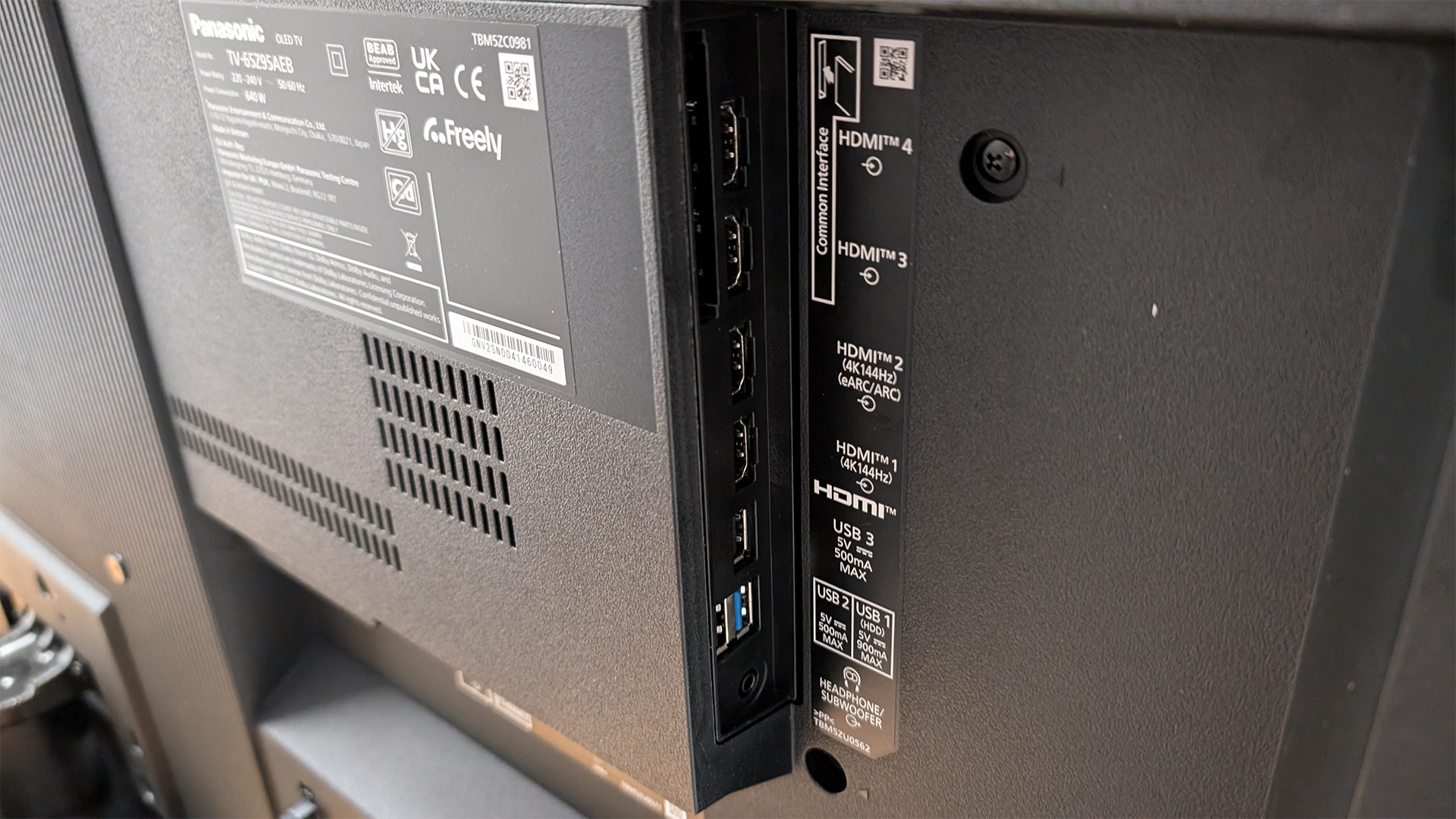
The Z95A’s biggest feature is its use of a second-generation MLA panel. The specific one used here is the same as that in the Philips OLED909 and LG G4 we reviewed earlier this year. Built by LG Display, the panel aims to let the Z95A offer radically higher maximum brightness levels than traditional OLEDs and its predecessor, which had a first-generation MLA panel.
The second-generation MLA tech works the same as the first gen’, using a layer of tiny lenses that focus the light produced by the WRGB OLED layer. But, interestingly, Panasonic currently quotes the Z95A’s screen as being a massive 50 per cent brighter than the MZ2000. The company declined to offer a specific nit count, but that means it should let it hit peaks of around 3000 nits, which would match the LG G4’s max brightness based on our experience with the old model.
Panasonic refers to the screen as a Master OLED Ultimate display. The Master part refers to extra tuning and optimisations the firm has done with the features brought by the TV’s new HCX Pro AI Processor MK II Processor. The CPU powers custom 'AI' powered services including 3D LUTs (Look-Up Tables), 4K Fine Remaster and Smooth Motion Drive Pro features. Silly branding aside, these combine to try and enhance detail and motion clarity in low light settings and generally let the set deliver 'significantly improved' colour accuracy.
The new processor also brings with it some Dolby Vision upgrades. The main one is support for Dolby Vision IQ with Precision Detail. Last year’s MZ2000 only had Dolby Vision and Dolby Vision IQ support. The enhanced 'Precision Detail' version seen on the Z95A aims to further enhance and refine Dolby Vision performance and ensure detail isn't lost in the darkest and brightest parts of the picture.
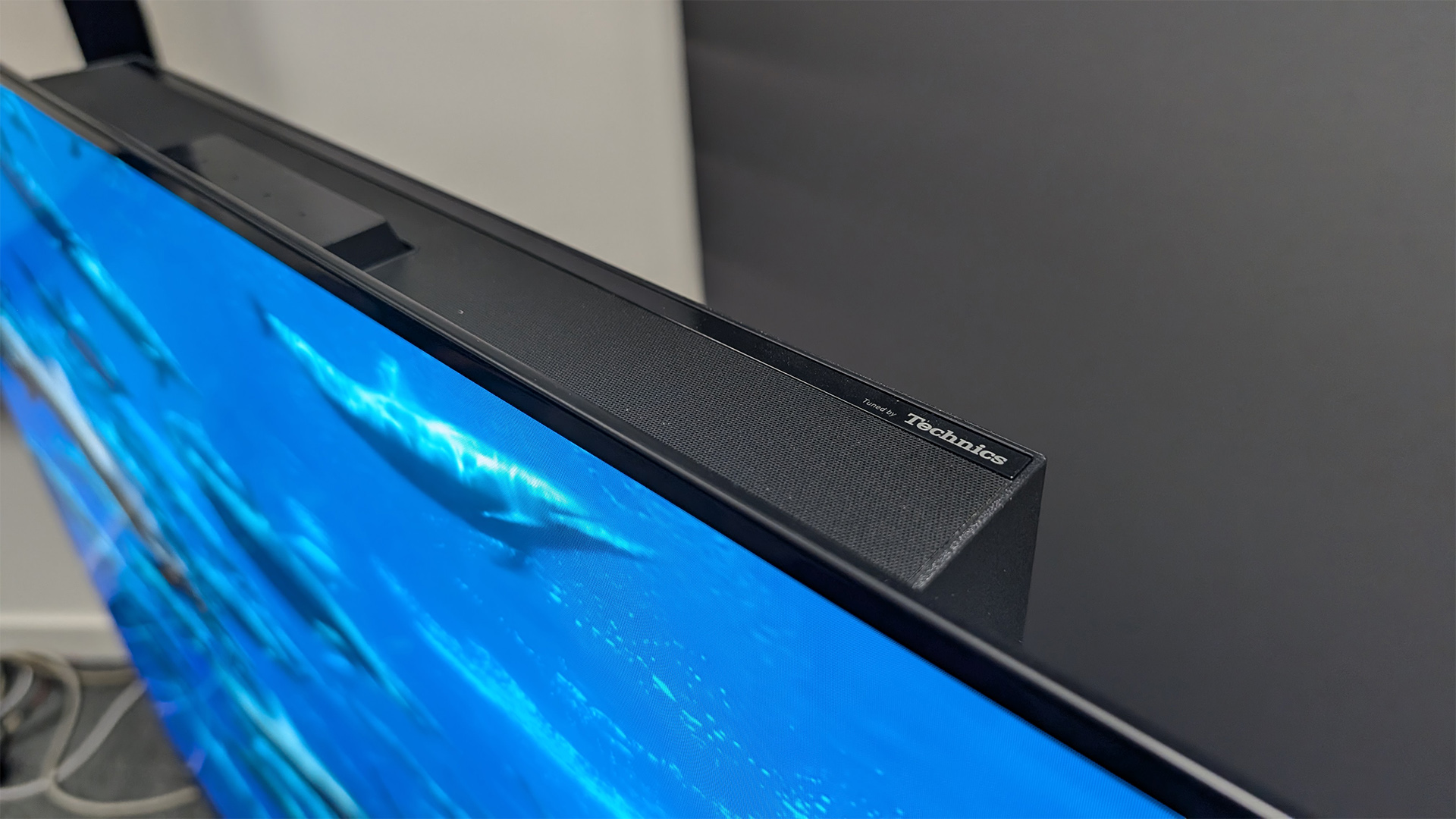
This rounds out the superb HDR coverage, with the set supporting the common HDR10 and HLG standards as well as the rarer HDR10+.
For gamers, there's also Dolby Vision gaming HDR support and a boosted 144Hz max refresh rate. By comparison, the MZ2000 only went up to 120Hz. The latter is a key feature that, coupled with the TV’s ALLM and VRR support, lets games run at significantly higher frame rates, making games feel smoother and more responsive. The jump to 144Hz will only be of interest to PC gamers with powerful rigs, as the PS5 and Xbox Series X/S can only run at 120Hz, however.
The only issue for gamers is that, like almost all non-LG and Samsung OLEDs, the chip used doesn’t support four full-fat HDMI 2.1 inputs. So once again the Z95A features two HDMI 2.1 connections, one of which doubles as the eARC required to connect a Dolby Atmos soundbar or AVR.
Panasonic may argue the inbuilt speaker system makes this less of an issue for the Z95A than its rivals, but we’d still have liked to see four HDMI 2.1 connections. This is because current-generation games consoles and PCs need the connectivity to run at full speed, so if you have multiple boxes and an Atmos soundbar, you will have to contend with a fair amount of cable swapping or limit the potential of one (or more) of your games machines.
The final big change is the switch from Panasonic’s My Home Screen operating system to Amazon's Fire OS. This is in most ways an undeniable positive as, while My Home Screen’s UI was easy to use, the OS suffered from poor app support for game streaming and specialist streaming platforms – including our editor’s much-loved Crunchyroll. Fire TV, meanwhile, has everything you could ever want. Whether it’s iPlayer, Netflix, or even horror specialist Shudder, you’ll find it supported on the Z95A. Freely, which is essentially live terrestrial TV via the internet rather than your aerial, will be supported, too, though hadn’t been activated at the time of our review.
The only minor negative with the move to Fire OS is that it at times feels a little clunky on the Z95A. In some instances, there is a minor but noticeable lag between clicking a command on the remote and it being enacted on the TV – a factor that makes typing passwords or entries into search bars using the remote fairly fiddly and, on occasion, outright frustrating.
Picture
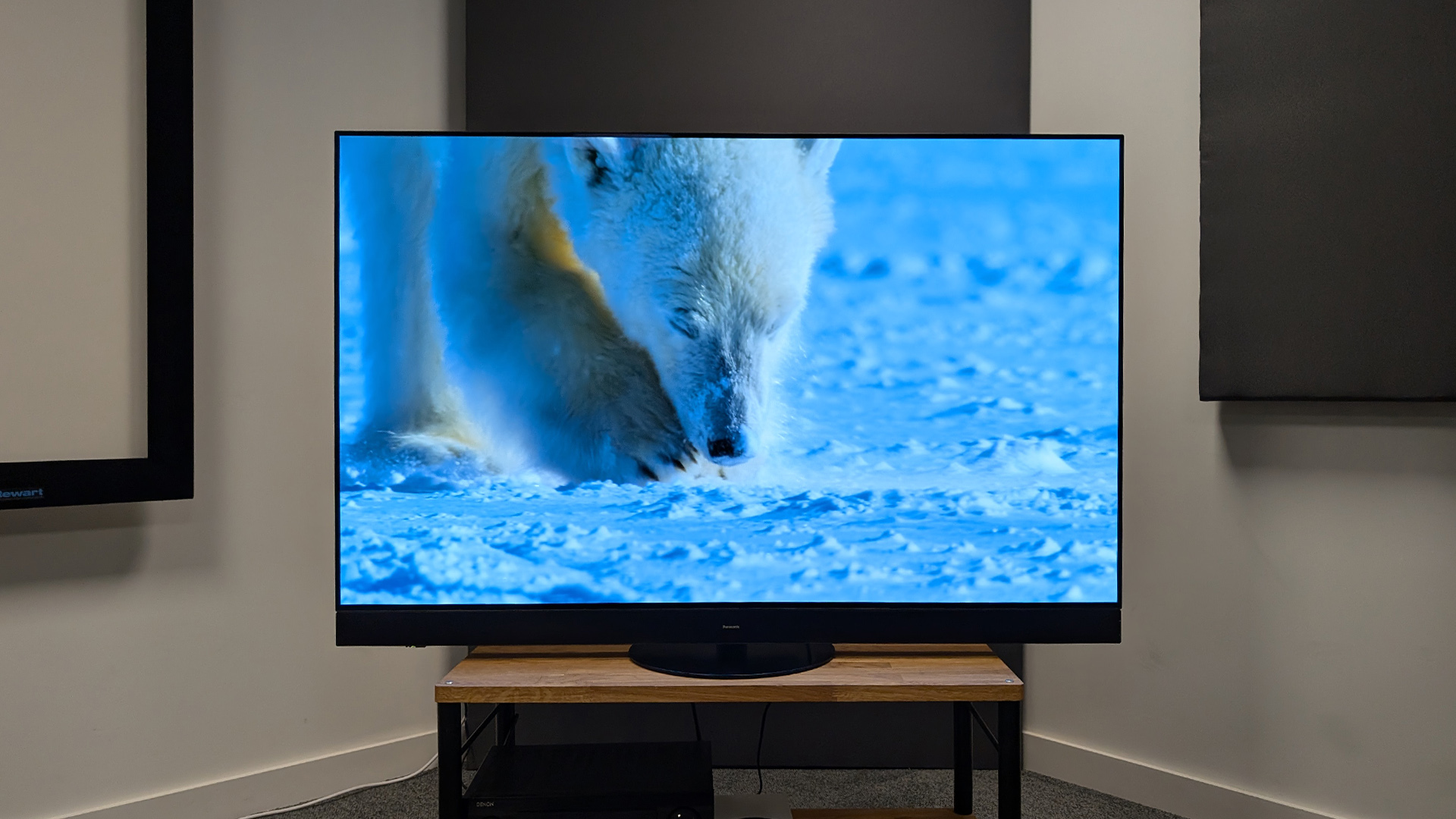
Now onto the most important question you should always ask when buying a TV: how good is the picture?
The short answer here is very good indeed. Panasonic has done stellar work taking advantage of the added brightness its second-generation MLA panel brings while retaining its overt focus on picture authenticity.
Out of the box, the TV’s standard mode is far too heavy-handed, with movements of characters in Schitt's Creek’s having an artificial feel, thanks to the set's motion handling being set too high and some of the settings cranking its contrast and colours to the point they look slightly unrealistic.
Thankfully, Panasonic’s Filmmaker Mode is a quick and simple way to fix this, and remains one of the best on the market. Turn it on and all processing and superfluous motion handling is immediately removed and results become markedly improved.
For those who want a little more pop, TrueCinema mode retains the lightest motion handling and adds minor boosts to the TV’s contrast, but we uniformly prefer the purist Filmmaker setting – albeit with one minor tweak to its native settings.
Playing our tried and tested Top Gun: Maverick 4K Blu-ray disc, the Z95A delivers a wonderfully punchy but truly authentic picture. The added punch of MLA makes the rippling reflections of the sun on the ocean sparkle in a way you simply don’t get on standard OLEDs, adding a wonderful three-dimensionality to the picture. The skyline offers a wide hue of warm colours that drags you into the scene.
The only minor issue occurs when Maverick appears in his hangar, with his skin tones looking slightly too yellow for our liking, giving him and other characters a slightly less realistic look than from the Sony Bravia 8 we have set up next to it.
Thankfully, this is fixed when we switch the colour profile from Warm 2 to Warm 1, which fixes the issue without sacrificing any of the picture’s otherwise excellent qualities. This is the only tweak we’d suggest to the Z95A’s settings in Filmmaker mode.
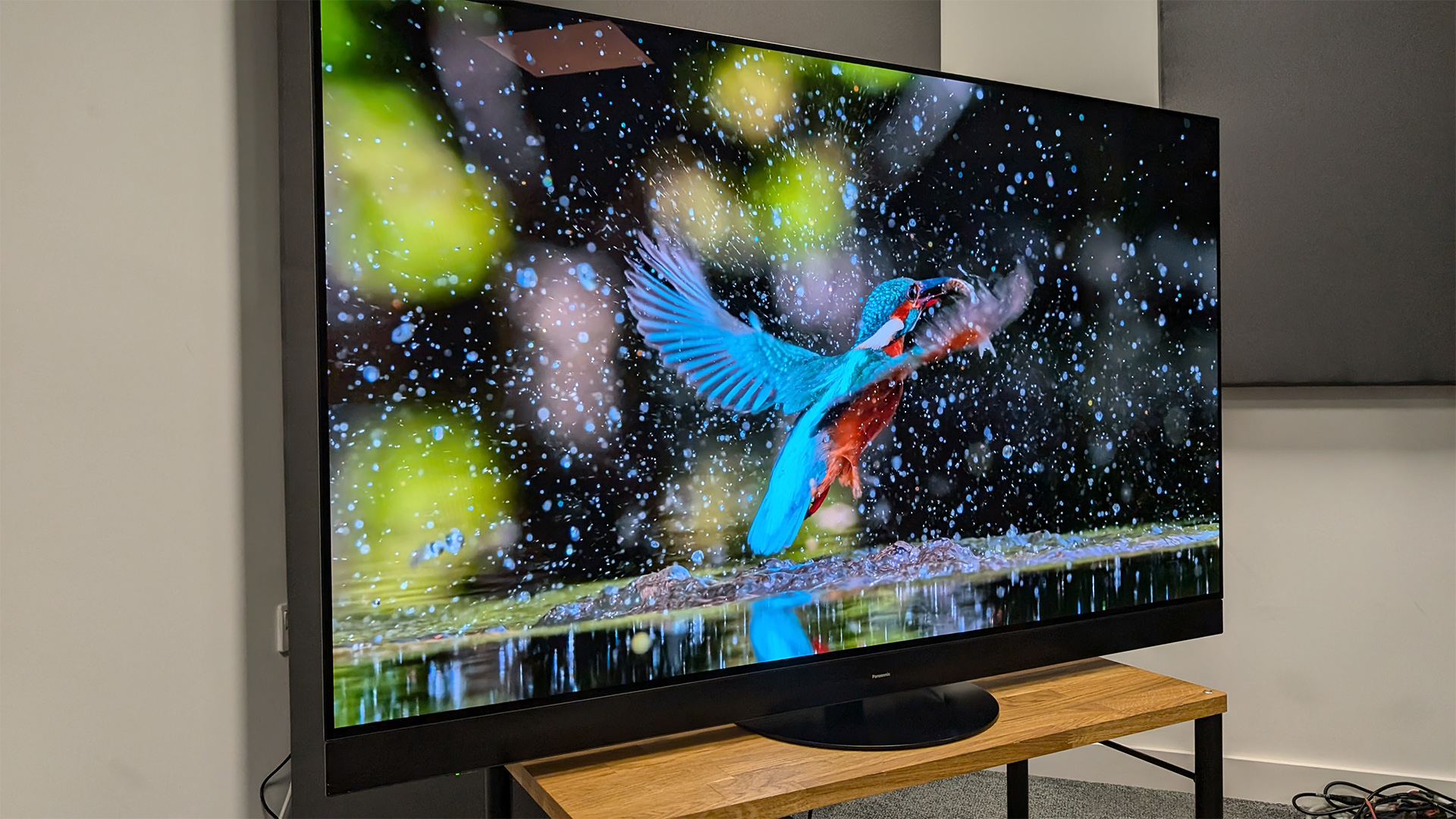
But it’s not just about the added punch MLA gives. Moving on to our Dune: Part 2 4K Blu-ray, the Z95A offers one of the best renditions of our standard test scene – a surprise attack by the rebel Fremen on the Harkonnen. As a tiny mouse runs across the sand, the level of detail is something to behold, with every strand of fur and grain of sand being clearly visible without ever looking oversharpened or having any hint of artificiality.
The TV does a stellar job with the difficult scene, which features a mix of incredibly bright and dark segments that rapidly shift. As the giant Spice miner is lowered into the sand, gears and details in its darkest shadows are visible that are completely lost on many competing OLEDs, including the Bravia 8 and LG C4, which show some sections as pure black.
The same is true with our 4K Blu-ray of Oppenheimer, where every single stitch and detail in the character’s knitted suits and ties remain visible, even in the darkest parts of the picture. It’s this control that Panasonic is famous for.
Despite its focus on control, the set does a fine job with more extreme movies that are designed to look over the top. The bright pink tones of Barbie pop as they should, but the picture otherwise looks entirely realistic, with Ken’s skin tones during his “I’m Just Ken” ballad scene looking authentic and the set never overbaking the picture.
There is one minor fly in the ointment, however. Switching to our Blade Runner 2049 4k Blu-ray test disc, an issue we’ve experienced on most MLA set repeats. As Ryan Gosling's character, K, enters a dilapidated farm, while there are wonderful amounts of detail, there’s a slight paleness in the darkest parts of the picture and colours lose some of their warmth and vibrancy. The issue isn’t so pronounced that it distracts and, in isolation, many may miss it, but it’s one area where non-MLA sets, including the Bravia 8 and LG C4, deliver a slightly more authentic picture, with skin tones in particular in the darkest part of the picture holding more warmth and contrast.
Moving to our standard SDR Blu-ray of True Grit, which is a very difficult title due to its incredibly dark scenes and intentionally grainy quality, upscaling is handled well. During the opening scene, no artefacts or aberrations appear as the snow slowly falls, and details, such as a rocking chair on the porch often lost when viewing the scene on less capable sets, remain clearly visible.
Sound
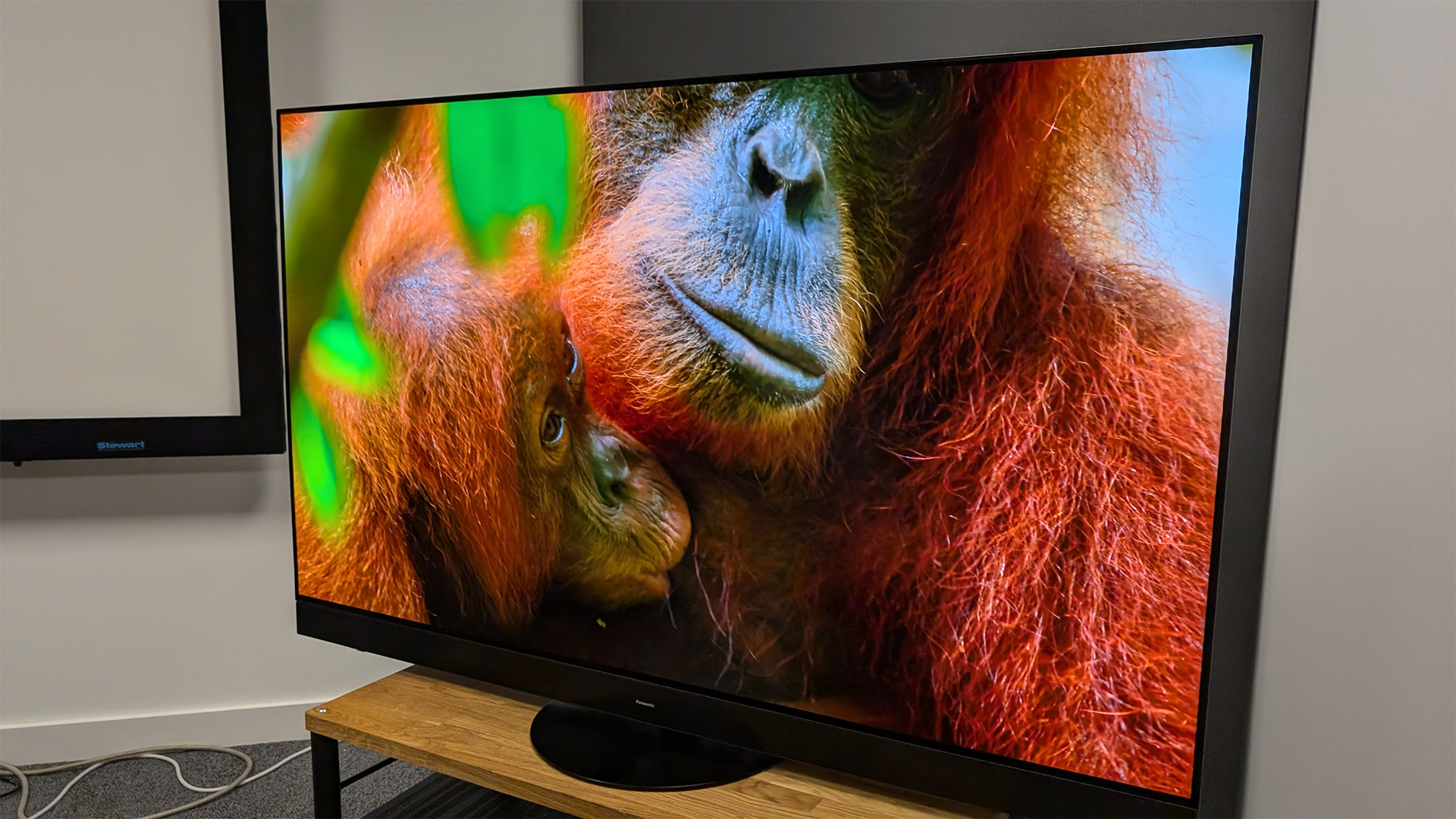
At a technical level, the Z95A has the same 5.1.2-channel 160W, speaker system as the MZ2000. But Panasonic claims it should offer radically better sound thanks to further '360 Soundscape Pro' tuning by Technics and enhanced processing by the TV’s new chip.
And while we still don’t think the system matches the performance of a decent soundbar, especially for Atmos, it does do fairly well by inbuilt TV speaker standards.
Playing Top Gun: Maverick after running the TV’s Space Tune feature, which optimises the sound to your room, the speaker system does a decent job. The rumbling engines of the jets have noticeably more weight than most TV speakers, without ever straying into forced or distorted territory. The snappy, thumping bassline of Kenny Loggins' Danger Zone and high-octane vocals also sound good, with the Z95A delivering the track with plenty of attack and dynamics. There is also a slight sense of height as a jet takes off overhead.
Moving to Blade Runner 2049’s second scene, the system’s low-end heft is once again on display and it does a decent job with the incredibly bassy synth soundtrack that drives many TV speakers to distortion. But the audio does begin to struggle in a few key areas.
Moving to a scene in an apartment where K converses with a hologram, while the vocals are nicely separate from background noise, there’s a lack of directionality. Nearly all the sound comes from the centre of the TV, making the location and direction of the characters' voices fairly static. This is indicative of a general lack of directionality from the system.
Playing a car chase from The Batman, while you do get a general sense of the BatMobile racing left and right across the screen, it doesn’t feel completely precise or fully aligned with the vehicle’s on-screen movements.
We attempt to fix this using the set’s new Sound Focus setting, which lets you adjust the speaker settings to match where you’re sitting or how many people are watching. The setting includes Pinpoint, Area, Spot and Ambient modes. While the Pinpoint mode does let us adjust the sweets spot to improve performance when one of our testers is sitting at a more sideways angle, it doesn't radically improve the audio’s directionality. This means, once again, you will get better results with a decent soundbar, such as the Sonos Arc, Sony Bravia Theatre Bar 9 or the Samsung HW-Q990D system.
Verdict
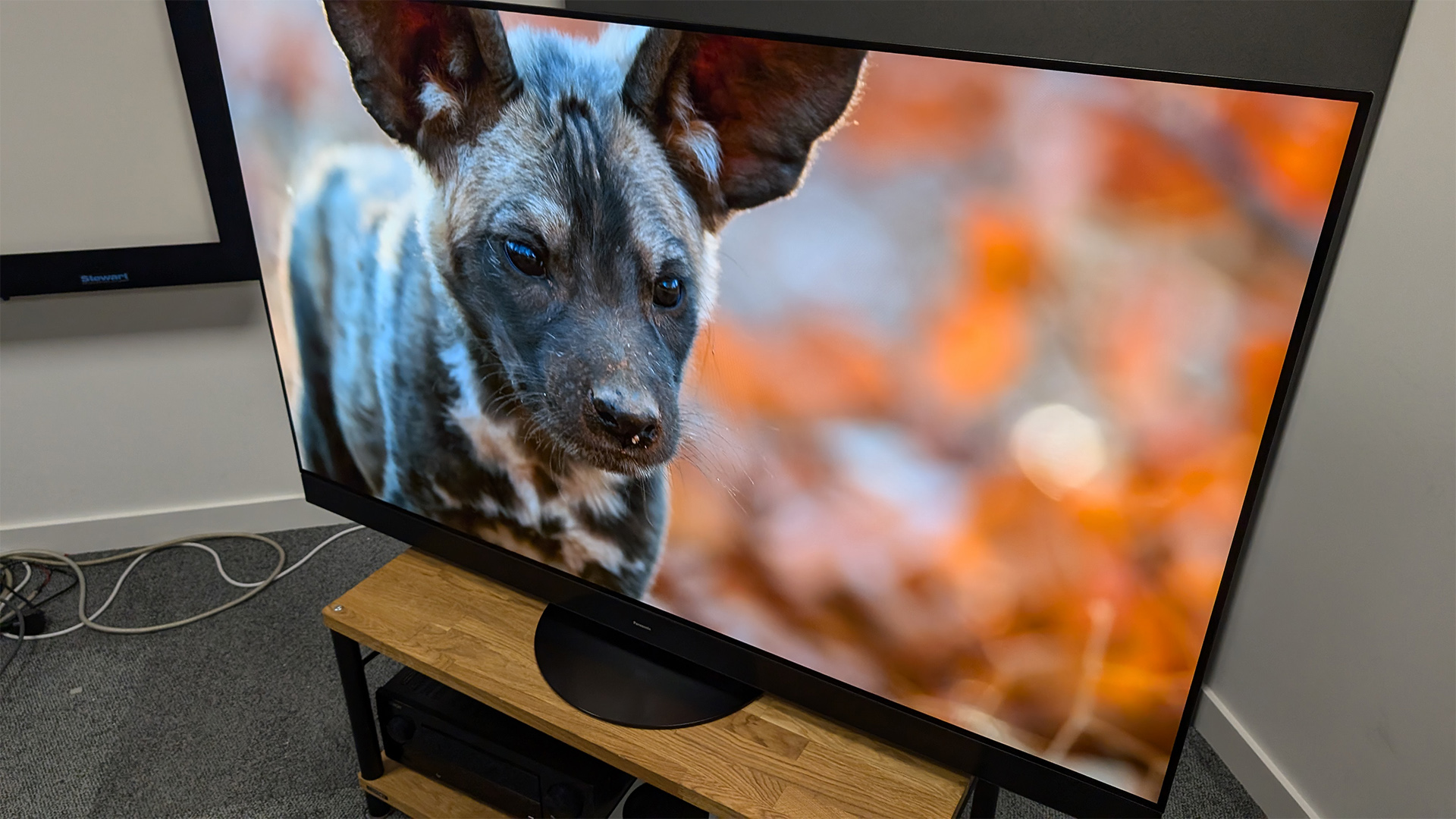
The Panasonic Z95A is a fantastic TV and a great showcase of how brightness-boosting MLA technology can be used to enhance picture quality. Thanks to Panasonic’s continued focus on delivering an authentic, controlled and balanced picture, the set uses the added brightness in a way that truly improves rather than distracts from what’s happening on screen. If you want a balanced 'as the director intended' movie-watching experience, we’d strongly recommend the Z95A.
SCORES
- Picture 5
- Sound 4
- Features 4
MORE:
Read our review of the LG G4
Also consider the Samsung S95D
Read our Philips OLED909 review
Best TVs: flagship OLEDs and affordable flatscreens tried and tested

Alastair is What Hi-Fi?’s editor in chief. He has well over a decade’s experience as a journalist working in both B2C and B2B press. During this time he’s covered everything from the launch of the first Amazon Echo to government cyber security policy. Prior to joining What Hi-Fi? he served as Trusted Reviews’ editor-in-chief. Outside of tech, he has a Masters from King’s College London in Ethics and the Philosophy of Religion, is an enthusiastic, but untalented, guitar player and runs a webcomic in his spare time.
- Lewis EmpsonSenior Staff Writer
